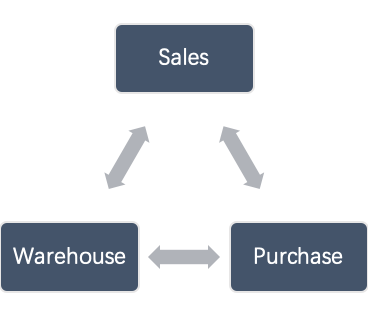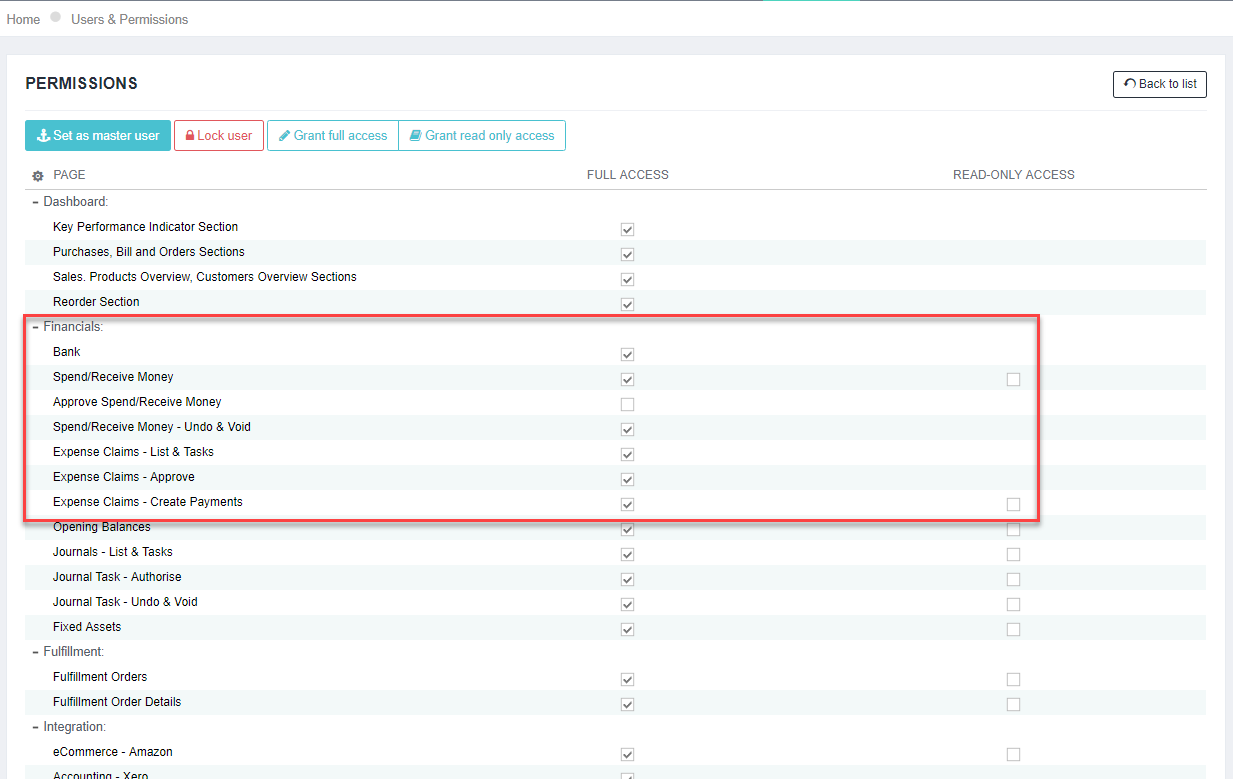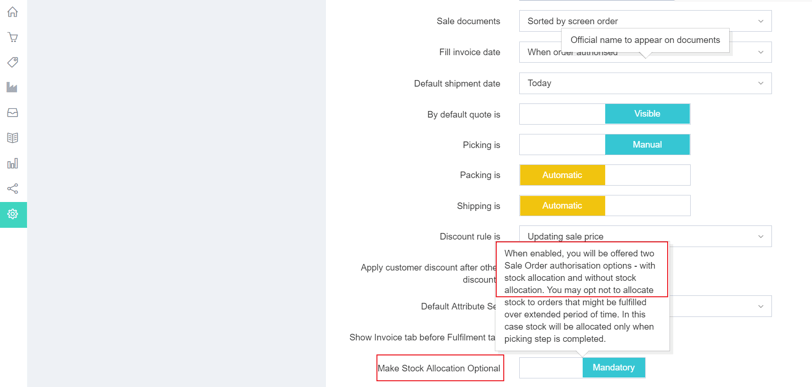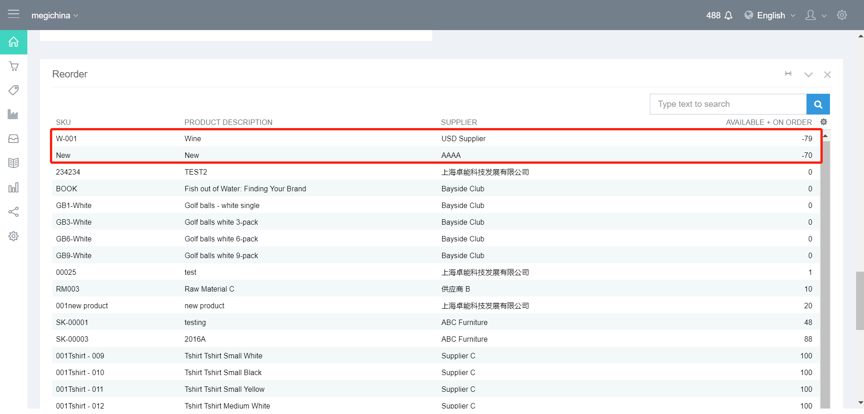If your business requires maintaining an inventory, you might sometimes feel like you’re walking a tightrope. While too much inventory leads to an increased operational cost, not having enough goods in stock means you run the risk of losing sales.
Inventory management is often the biggest headache for SMEs in China. Owners tend to make hasty and uninformed decisions on the purchase of goods. Meanwhile, due to cost concerns, many SMEs are unable to implement a sound inventory management by employing an efficient ERP system. A small trade company we recently visited has just encountered an unpleasant case caused by inventory shortage.
The salesperson of the company received an order of 100 finished goods from a newly acquired customer and immediately checked with the warehouse whether there were enough products. After getting a positive reply, the salesperson signed the contract the following day.
A week later when the company was scheduled to deliver the goods, the salesperson was told that there only remained 20 in the warehouse; the other goods had already been shipped out to other customers! Only then was it clear to the management team the negative impact on the business for not having real-time and accurate stock keeping information.
A Faulty Way to Record Inventory
The general manager found out that the company relied on Excel to record the purchase and sales of inventory. Without a system to indicate the real-time stock, salespeople had to check with the inventory staff. However, the inventory staff failed to identify the goods that had been booked and only provided the number of the total goods in stock.
Each time when salespeople informed the warehouse about the orders, the warehouse did not “lock in” the goods. Since the inventory staff did not know the delivery date of each contract, they could not make informed decisions on which clients they needed to prioritize. They prioritized based on information passed on by salespeople.
When inventory managers cannot give an accurate answer on the goods available at a certain delivery date, the sales team can be misled by the skewed data and therefore make mistakes.
Avoiding Stock-outs
One of the worst scenarios in business is to turn away customers – people who are ready to give you their money – simply because you’ve run out of the item they want. In this case, the delivery was due in three days and the company could not wait to replenish the warehouse. In order not to pay the penalty and, more importantly, to retain the new customer, the company had no choice but to purchase the goods from one of their competitors, and at a purchase price higher than the sales price!
The Importance of Inventory Management System
Manually recording inventory can easily lead to mistakes, as is shown in the above case. Using EXCEL is like building an inventory management system from scratch and allows too many opportunities for mistakes to occur:
- Incorrect formulas
- Wrong data columns
- Lack of information to help with data entry
- Non-reconciliation of records among different staff/ departments
- Lack of automatic alerts for potential stock-outs
- Other human errors
A flawed inventory management using Excel can hardly produce the correct information needed for inventory decisions. Data collaboration cannot be achieved by the company as well. A sound inventory management system, when put in place, can ensure the accuracy and more importantly the timeliness of the data.

Solutions
To achieve a sound inventory management, manual recording is far from enough. Companies, especially SMEs, need inventory management tools and software that are easy to learn, convenient to use and reasonably priced, to organize and streamline their business.
Stoqo, a cloud inventory management software introduced from Australia and tailor-made to China, is your solutions. It can help businesses achieve their internal coordination among inventory purchase, warehouse, and sales.
Let’s see how it works to better your inventory management:
Clear-cut job responsibilities for each position and time frame for key tasks
Segregation of duties is a key internal control intended to minimize the occurrence of errors or fraud. The software can set different responsibilities and powers for different roles.

Meanwhile, orders shall be recorded into the system promptly after signing the contract (e.g. within two hours) by the salesperson. Inbound and outbound records must be input in the system by the inventory staff immediately to ensure accuracy and timely update of the data.
“Locking-in” function for booked goods.
“Order Reserve” function of the system can lock in the goods that are already booked out so that inventory would not be shipped out randomly.

Real-time inventory quantities – stock on hand.
The system can identify “stock on hand” and “stock booked” to ensure the accuracy of the real-time quantities of available inventory.

Minimum inventory quantity reminders
When stock decreases to the prescribed minimum value, a reminder appears on the screen automatically so that the inventory can be replenished timely.

Lead time forecast
Even when inventory is low, salespeople do not have to panic. They can use the “lead time forecast” function to predict the quantities of inventory available on a certain day.

Management tools like Stoqo automate and streamline the inventory management process while integrating with other tools, such as your eCommerce site, accounting system, performance evaluation modules, etc.
They are far more robust than the old-school spreadsheet system. By providing you with higher levels of accuracy, visibility, control, and real time data, smart inventory software add value to your business and prevent you from making costly and ill-informed business decisions.
As e-commerce is growing at a galloping pace in China, companies need to be very responsive to market needs. However, if the internal information does not match among different departments, as is shown in the case discussed, collaboration can hardly be realized and business opportunities may be easily lost.
We often hear complaints of bad inventory management from SME owners in China. Due to cost and resources limitation, few of them would choose ERP systems, which is both costly and user-unfriendly, to manage inventory. Stoqo, an economical and efficient inventory management software that costs less than RMB 300 per month per user, might be of assistance in managing your company’s inventory.





